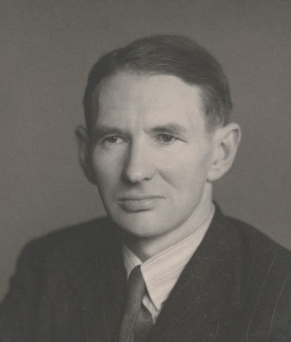Douglas Jay facts for kids
Quick facts for kids
The Lord Jay
|
|
|---|---|

Jay, pictured in 1949
|
|
| President of the Board of Trade | |
| In office 18 October 1964 – 29 August 1967 |
|
| Prime Minister | Harold Wilson |
| Preceded by | Edward Heath |
| Succeeded by | Anthony Crosland |
| Financial Secretary to the Treasury | |
| In office 23 February 1950 – 30 October 1951 |
|
| Prime Minister | Clement Attlee |
| Preceded by | Glenvil Hall |
| Succeeded by | John Boyd-Carpenter |
| Economic Secretary to the Treasury | |
| In office 13 November 1947 – 23 February 1950 |
|
| Prime Minister | Clement Attlee |
| Preceded by | Office created |
| Succeeded by | John Edwards |
| Member of Parliament for Battersea North |
|
| In office 26 July 1946 – 13 May 1983 |
|
| Preceded by | Francis Douglas |
| Succeeded by | Constituency abolished |
| Personal details | |
| Born |
Douglas Patrick Thomas Jay
23 March 1907 |
| Died | 6 March 1996 (aged 88) |
| Nationality | British |
| Political party | Labour |
| Spouses | Peggy Jay Mary Thomas |
| Children | 4, including Peter Jay (born 1937), Helen and Catherine Jay (born 1945) |
| Alma mater | Winchester College New College, Oxford |
Douglas Patrick Thomas Jay, Baron Jay, PC (23 March 1907 – 6 March 1996) was a British Labour Party politician.
Contents
Early life
Educated at Winchester College and New College, Oxford, Jay won the Chancellor's English Essay in 1927 and gained a First in Literae Humaniores ('Greats') in 1929. He was a Fellow of All Souls from 1930 to 1937. His early career was as an economics journalist working for The Times (1929–33), The Economist (1933–37) and the Daily Herald (1937–41), then as a civil servant in the Ministry of Supply and the Board of Trade, from 1943 as personal assistant to Hugh Dalton.
In The Socialist Case (1937) he wrote: "in the case of nutrition and health, just as in the case of education, the gentleman in Whitehall really does know better what is good for people than the people know themselves". This statement was mercilessly exploited by the Conservatives and won him long-lasting notoriety; it has often been paraphrased as "the man in Whitehall knows best".
Parliamentary career
Jay was elected member of Parliament for Battersea North at a by-election in July 1946, representing the Labour Party, and held the seat until the constituency was abolished at the 1983 general election.
Alongside Evan Durbin and Hugh Gaitskell, he brought the thinking of John Maynard Keynes to the Labour Party, especially in relation to price determination. Later his views somewhat changed, as he became influenced by the successful operation of rationing during the war. He served as Economic Secretary to the Treasury from 1947 to 1950, Financial Secretary to the Treasury from 1950 to 1951 and President of the Board of Trade from 1964 until being sacked in 1967. He was sworn of the Privy Council in 1951.
He was opposed to the UK's entry into the European Communities, and campaigned for a 'no' vote in the 1975 referendum.
Honours
Jay was created a life peer as Baron Jay, of Battersea in Greater London, on 8 October 1987.
Family
In 1933 he married the councillor Peggy Jay; their marriage ended in divorce. Their eldest son is the economist Peter Jay, who married (and later divorced) Margaret Callaghan, daughter of James Callaghan with whom Douglas Jay had served in government. Their twin daughters, Helen and Catherine, achieved a fashionable profile in the 1960s. Douglas Jay's second wife, Mary Thomas, had been one of his assistant private secretaries at the Board of Trade.


